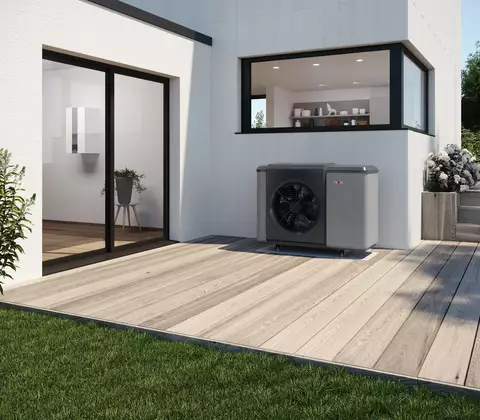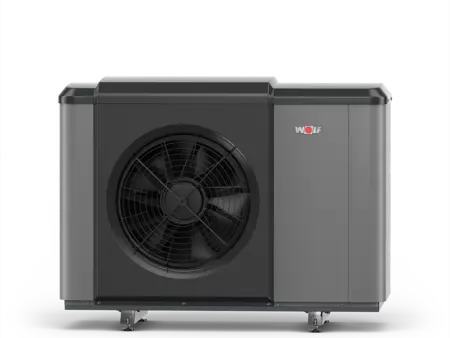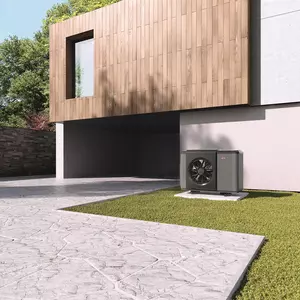
Types of heat pumps
& their pros and cons
Heat pumps are the most popular heating system in new buildings. Even so, only 3.4% of private residential buildings have this heating system. Use in existing buildings also makes sense, primarily due to the increasing relevance of renewable energies. But not every heat pump is suitable for every building. Because of this, it is worth taking a look at the advantages and disadvantages of different types of heat pumps.
How the different types of heat pumps work
The gas, which is now much warmer, transfers its heat to the water in the heating system via a heat exchanger. In the process it cools down. The refrigerant becomes liquid again, expands and reaches the starting point. The cycle starts all over again. The converted thermal energy can be used for heating or to provide hot water.
The air-to-water heat pump
An air-to-water heat pump, also called an air source heat pump, uses the outside air as an energy source. The air is subject to large temperature fluctuations, and unfortunately, the outside temperature is usually lowest when you need the most heating energy – namely in winter.
As a result, air source heat pumps require a higher compressor output. However, the ambient air can be drawn in without any problems, making this type of heat pump relatively cheap to buy and install.

The brine-to-water heat pump
A brine-to-water heat pump, also known as a geothermal or ground source heat pump, draws most of its energy from the ground. This can be done in one of two ways.
- Variant 1:Geothermal borehole heat exchangers extend as far as 100 m into the ground, where the temperature is a relatively constant of around 12 °C.
- Variant 2: Another possibility is to place surface collectors close to the frost line. This will require more space, but no deep drilling is required. Brine, a frost-proof, liquid flows through the pipes of these collectors rather than pure water.
The water-to-water heat pump
To use the groundwater as a heat source, you need to drill two wells. The water rises through the suction well, and it is returned through the drainage well. You need a permit for this in most areas. The groundwater has a temperature between 8 and 12 °C all year round.
The air-to-air heat pump
This heat pump is only suitable for buildings that have a ventilation system and a low heat requirement. It uses the waste heat from the ventilation system to heat the building.
Suitable types of heat pumps for different buildings
While you have all options in a new building, in an existing building you must, for example, take into account the condition of the building and the type of radiator.
The excavation work can be troublesome as well, which is why the air source heat pump has therefore established itself as the ideal solution to supplement an existing heating system.


